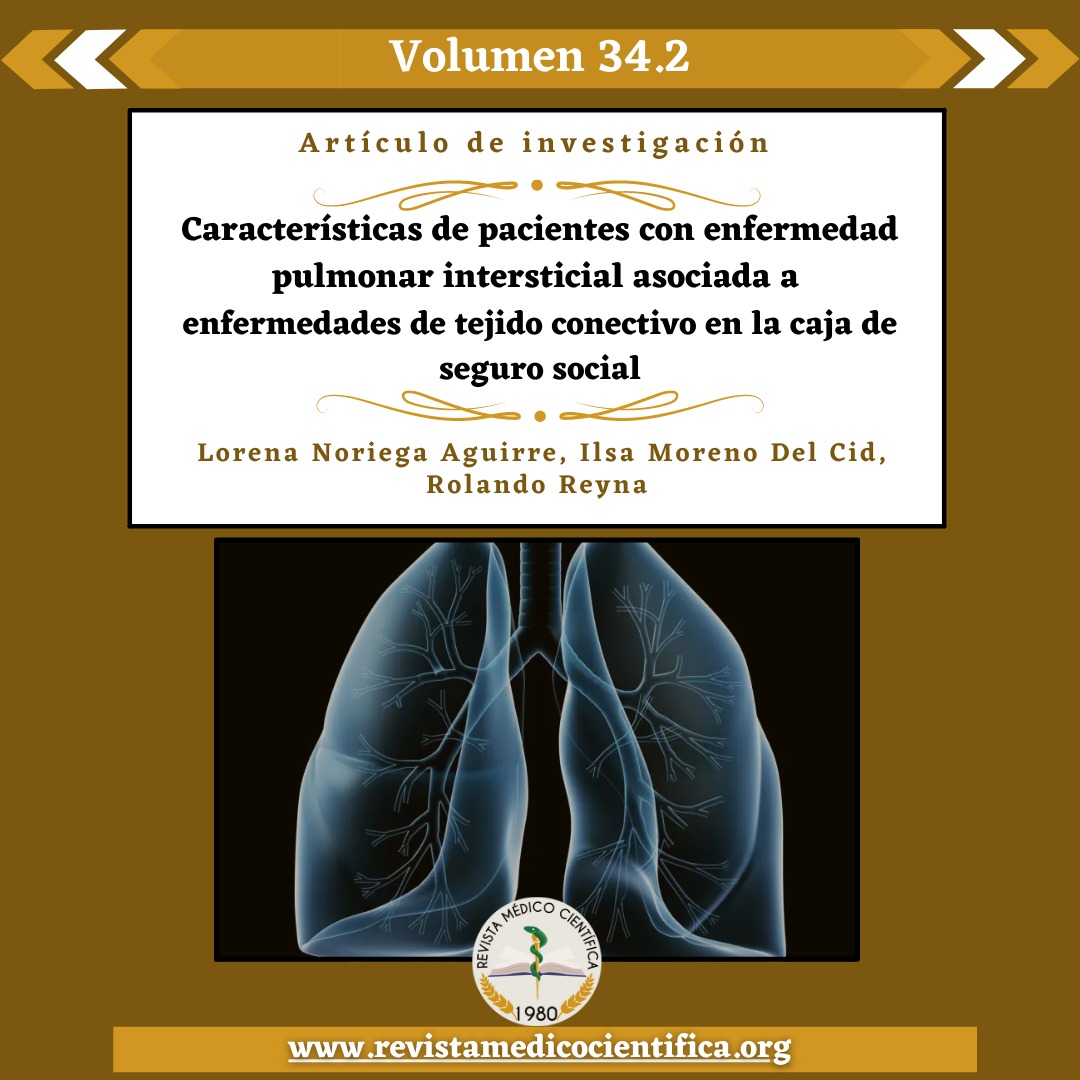CHARACTERISTICS OF PATIENTS WITH INTERSTICIAL LUNG DISEASE ASSOCIATED WITH CONNECTIVE TISSUE DISEASES IN THE SOCIAL SECURITY
Main Article Content
Abstract
Introduction
Diffuse interstitial lung disease associated with connective tissue diseases is the most common cause of interstitial pneumonia, accounting for 30% of them.
Methodology
Descriptive and retrospective study in patients with interstitial lung disease associated with connective tissue diseases, with diagnoses established between 2015 and 2019, in facilities of the Caja de Seguro Social.
Results
38 cases were analyzed, most of them female 81.58% (31/38), with an average age of 57 years (SD 11.15), and 39.47% from the province of Panama.
Systemic sclerosis and rheumatoid arthritis were the most frequent collagen diseases with 21.05% each. Dyspnea in 96.84% and cough in 60.53% were the most frequent respiratory symptoms.
The most frequent antibodies were ANA in 34.21%, Anti Anti Ro and rheumatoid factor in 18.42% of the cases. The tomographic pattern of nonspecific interstitial pneumonia was found in 34.21% of the cases and the average value of carbon monoxide diffusion was 56% of the expected value. Steroids in 50% and azathioprine in 38.24% were the most used treatments.
Conclusions
The connective tissue diseases most associated with interstitial lung disease were systemic sclerosis and rheumatoid arthritis. Respiratory symptoms are nonspecific, carbon monoxide diffusion and a pattern of nonspecific interstitial pneumonia contribute to the diagnosis.
Article Details

This work is licensed under a Creative Commons Attribution-NonCommercial-NoDerivatives 4.0 International License.
The authors grant the Editorial Comitte of Revista Medico Cientifica the right to publish this article in it. Also, they state that this manuscript has not been published prevously.

